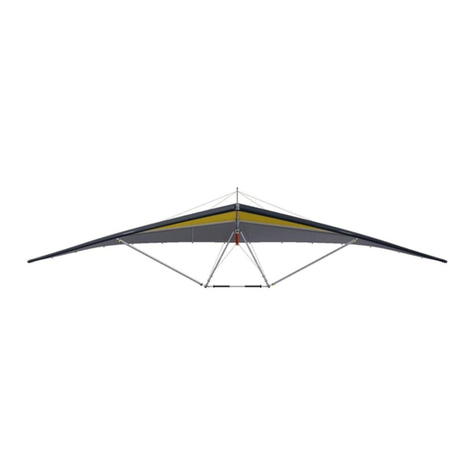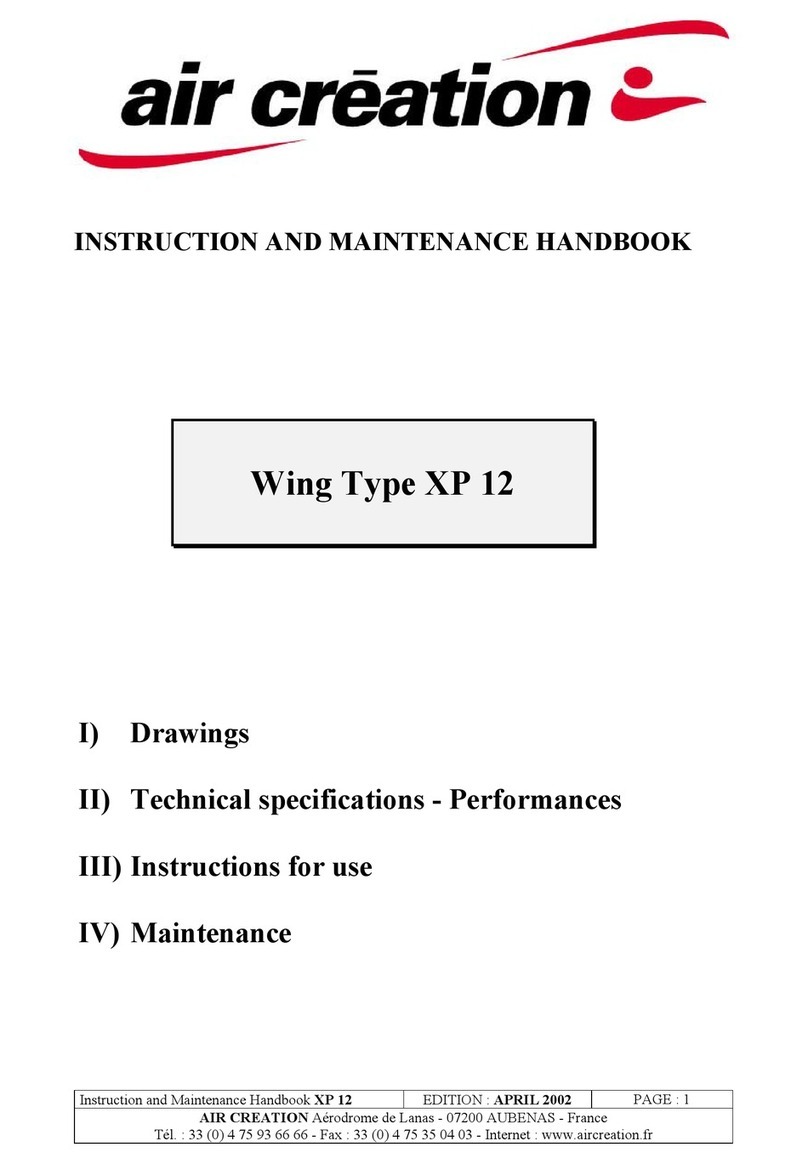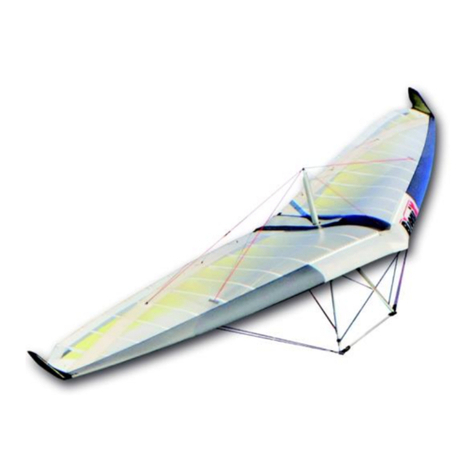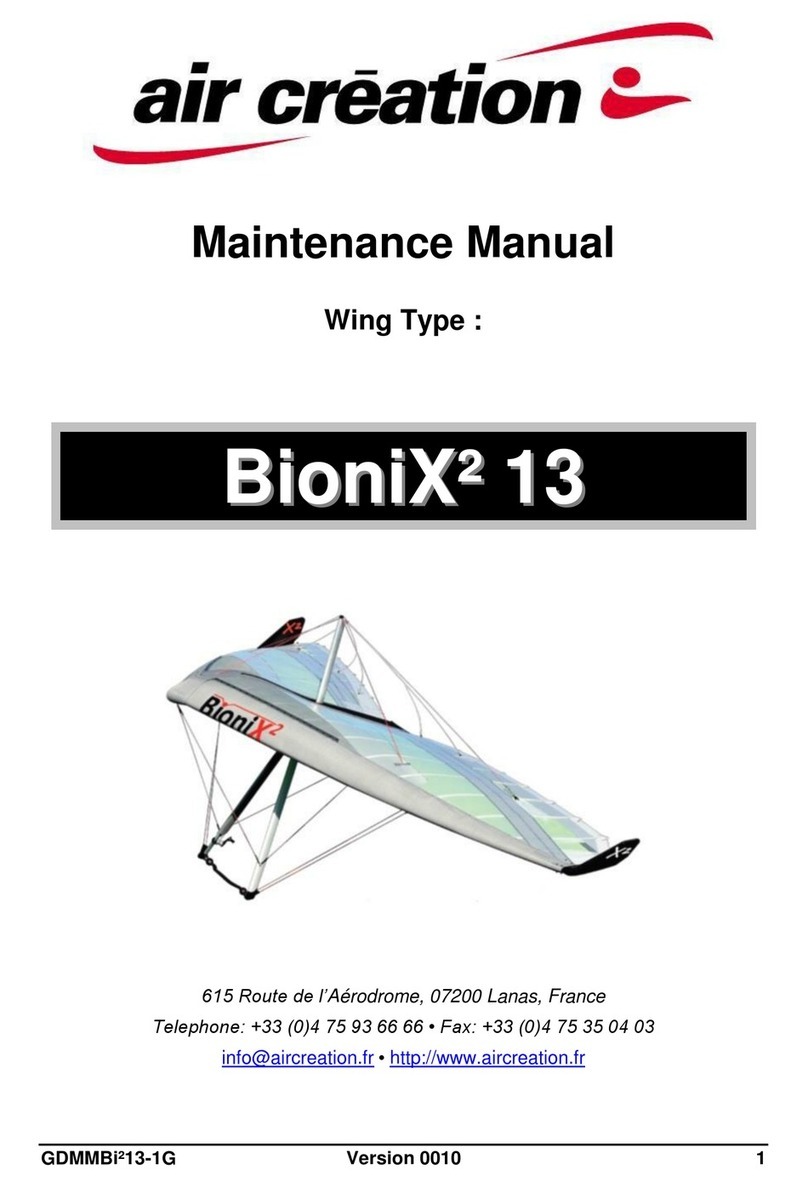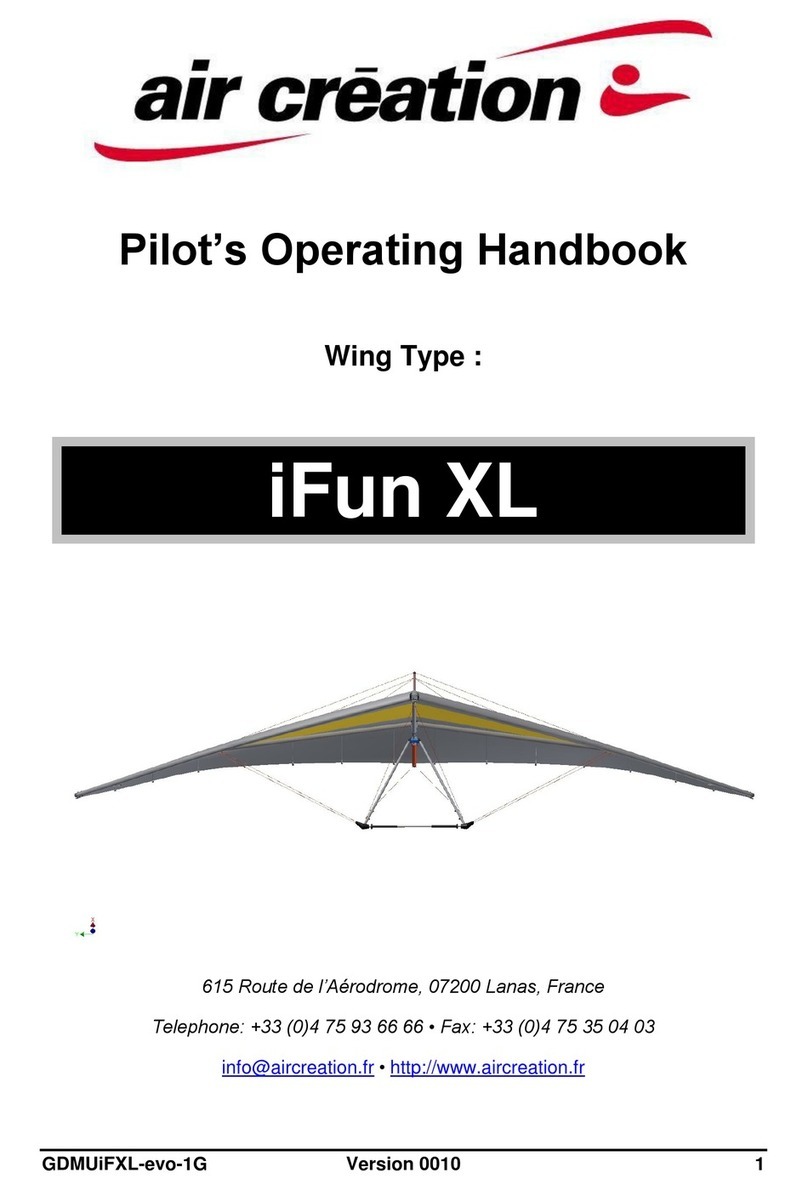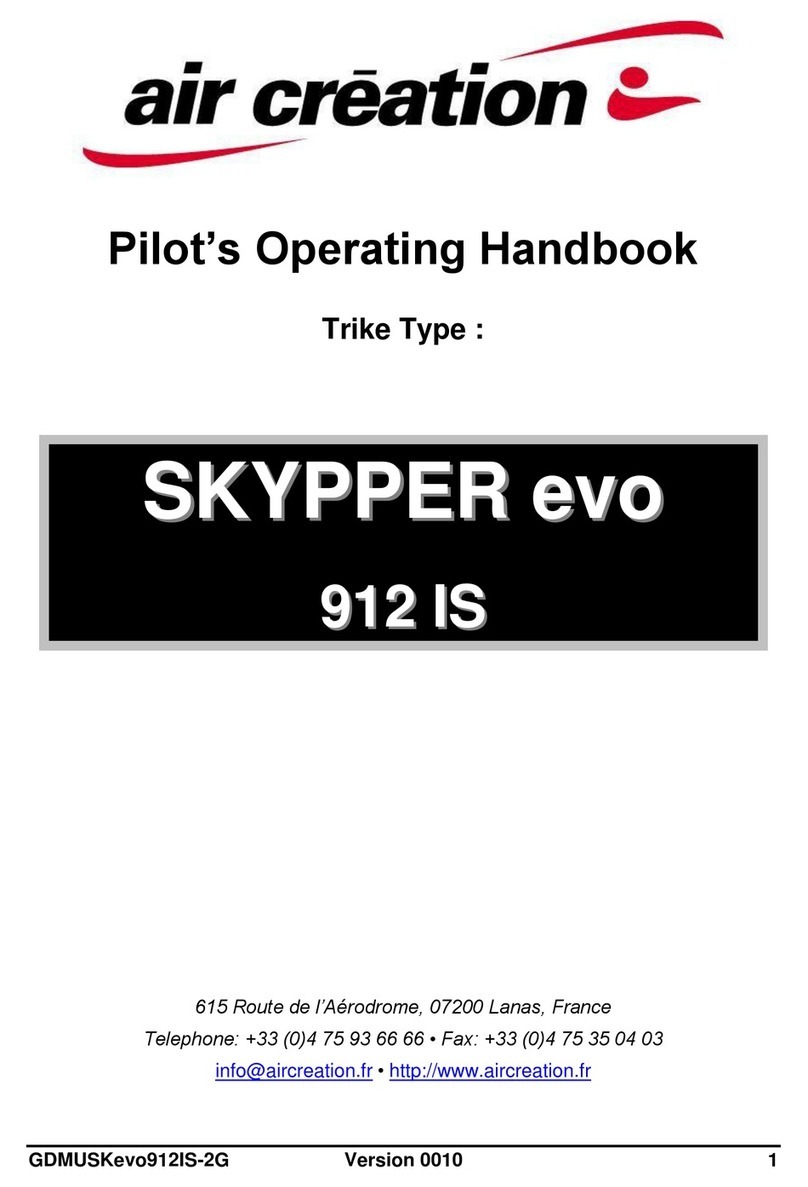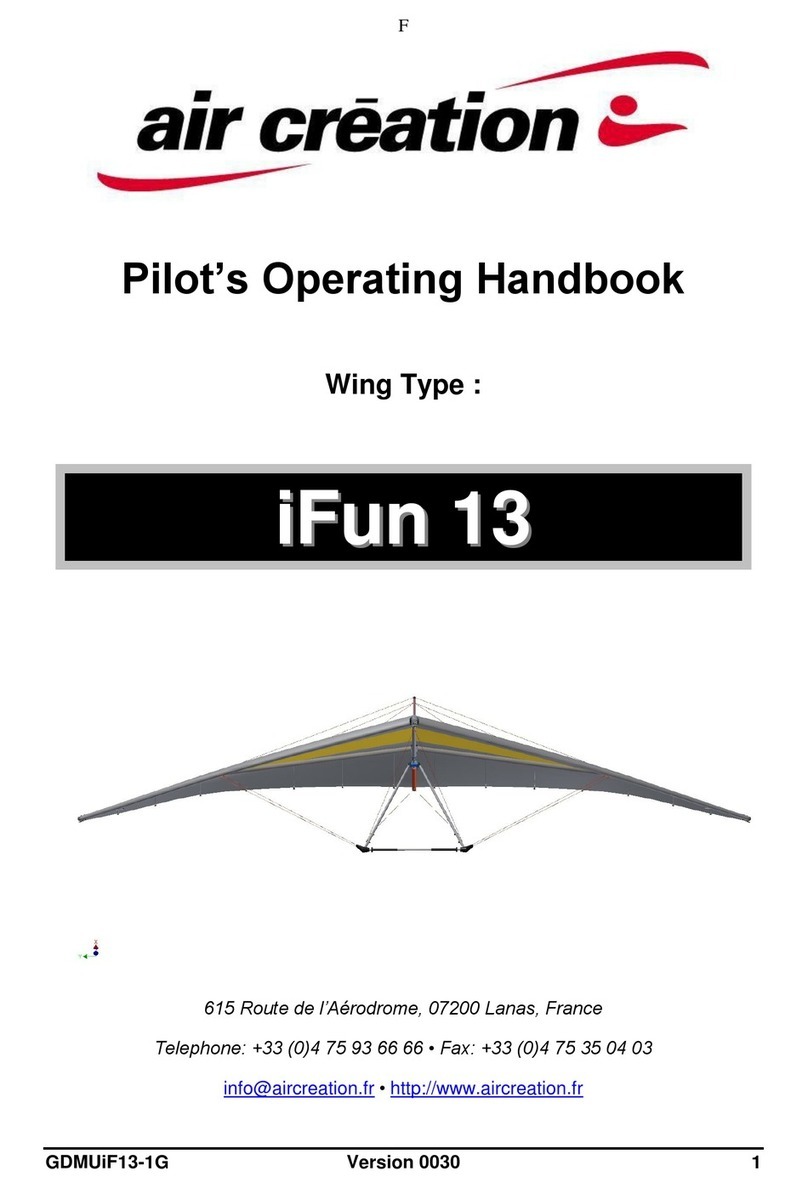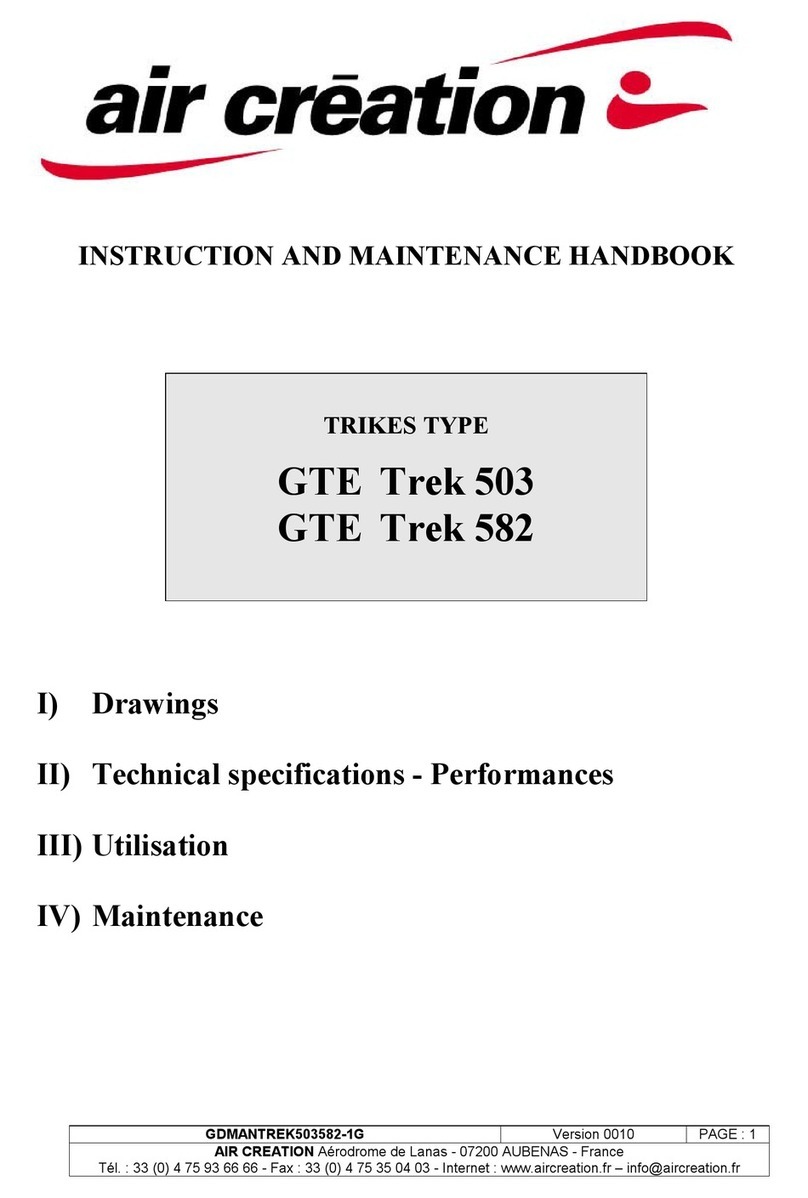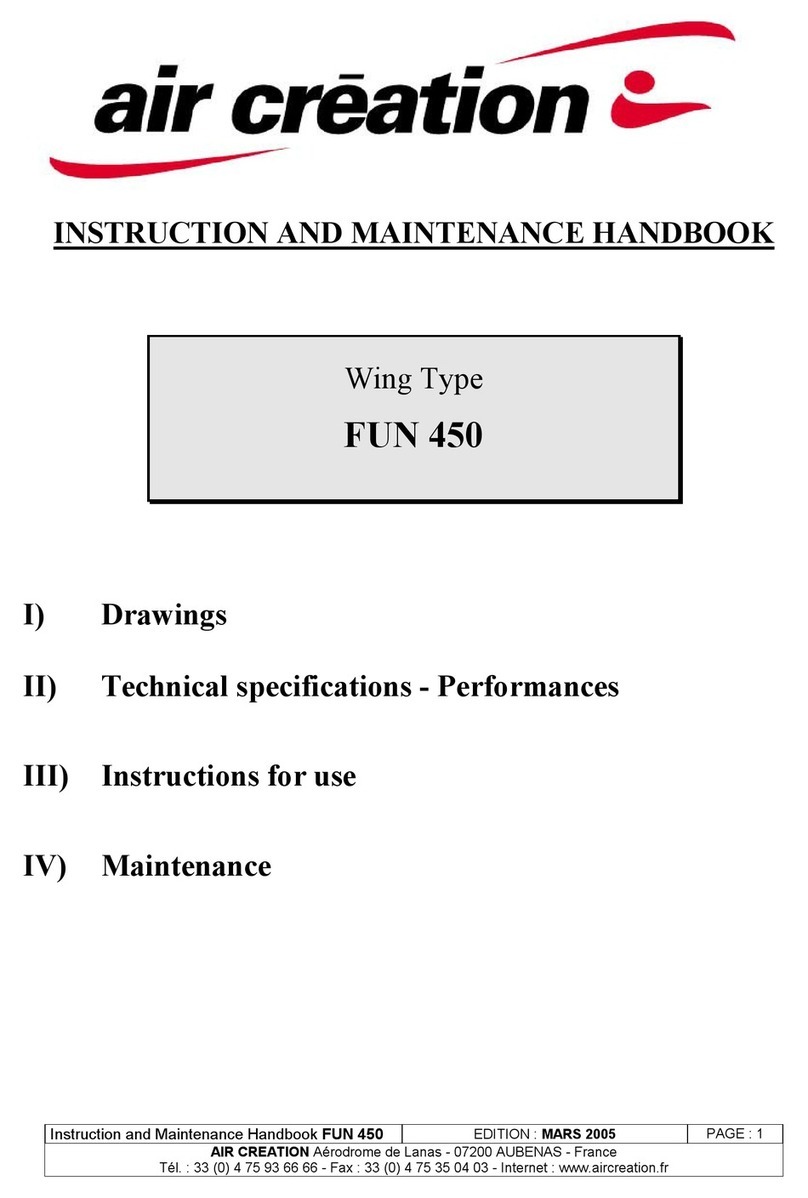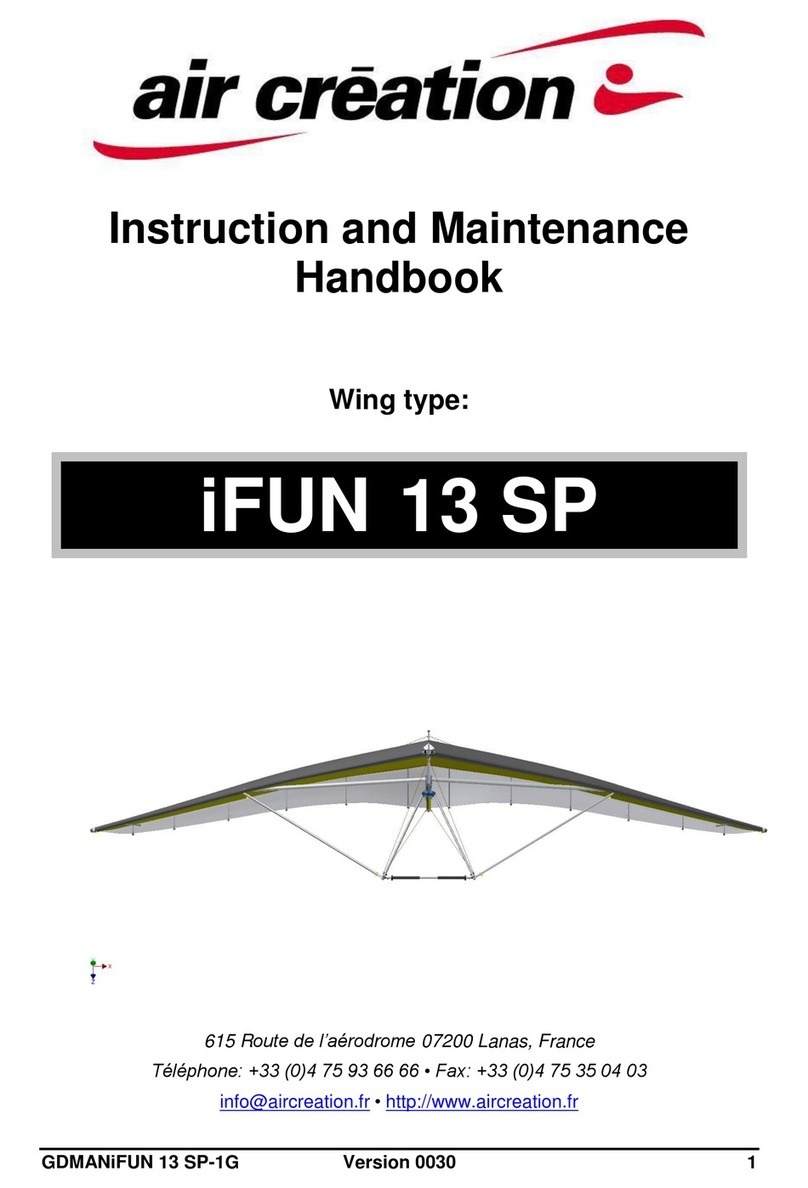GDMMTA582-1G Version 0010 2
1 Table of Contents
1Table of Contents................................................................... 2
2Amendment Record Sheet .................................................... 4
2.1 Table of Amendments.......................................................................... 4
2.2 Amendments........................................................................................ 4
3Introduction............................................................................ 5
3.1 Skills..................................................................................................... 5
3.2 Tools .................................................................................................... 5
3.3 Air Creation Directives ......................................................................... 6
3.4 Units..................................................................................................... 6
3.4.1 Use of Metric/Imperial Units...................................................................................6
3.5 Lifting & Shoring................................................................................... 7
3.5.1 Lifting the Entire Trike ............................................................................................7
3.5.2 Lifting One Rear Wheel..........................................................................................7
3.5.3 Lifting the Front Wheel ...........................................................................................7
3.6 Transportation & Storage..................................................................... 8
3.6.1 Towing....................................................................................................................8
3.6.2 Taxiing....................................................................................................................8
3.6.3 Ground Transportation ...........................................................................................8
3.6.4 Long-Term Hangarage...........................................................................................8
4Servicing................................................................................. 9
4.1 General ................................................................................................ 9
4.2 Replenishing ........................................................................................ 9
4.2.1 Fuel System Replenishment ..................................................................................9
4.2.2 Fuel Sampling/Draining..........................................................................................9
4.2.3 Coolant Replenishment........................................................................................10
4.3 Tire Inflation ....................................................................................... 10
4.4 Instrumentation .................................................................................. 10
5Maintenance Checks............................................................ 11
5.1 General .............................................................................................. 11
5.2 Time Limits......................................................................................... 11
5.3 Scheduled Maintenance Checks........................................................ 11
5.3.1 Trike Maintenance Schedule................................................................................12
5.3.2 Powerplant Maintenance Schedule......................................................................13
